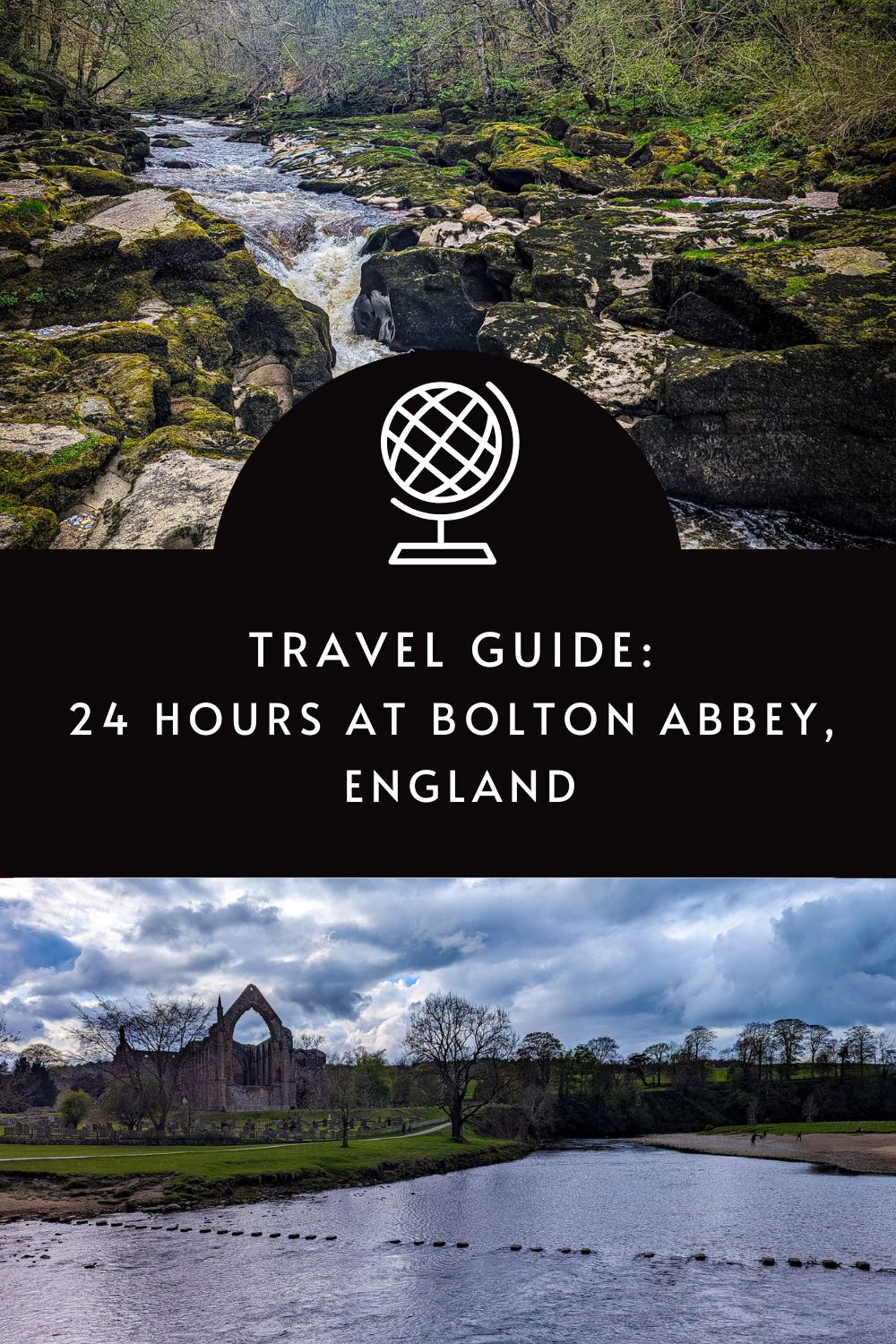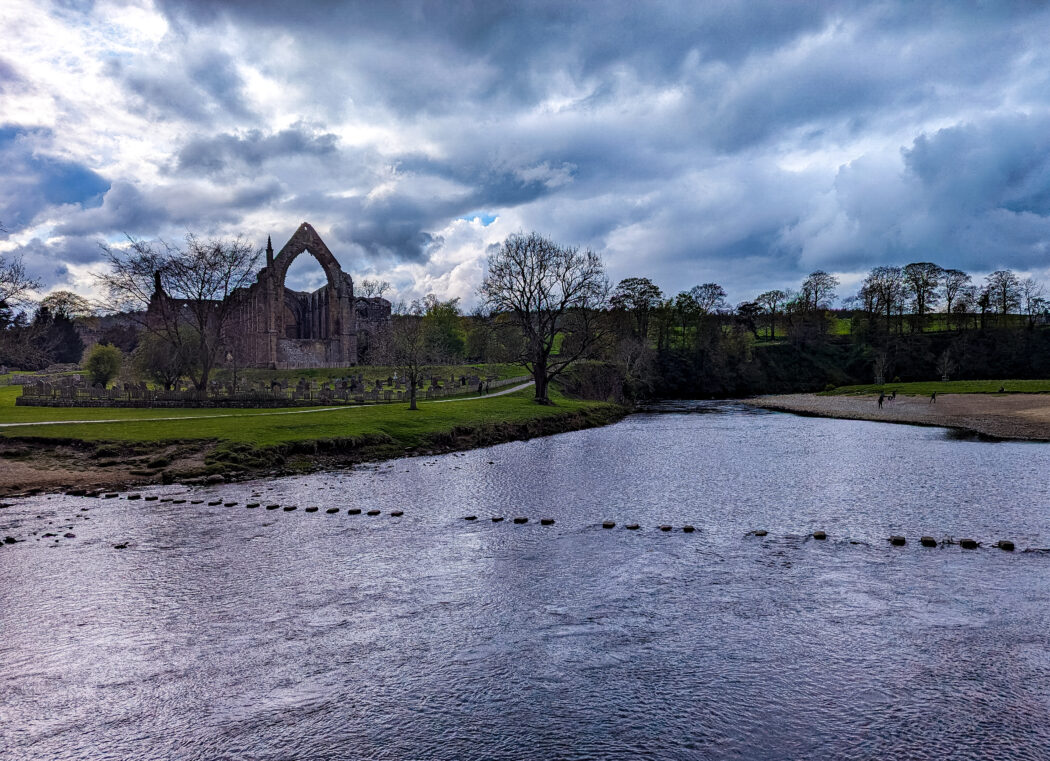In 2024, the Caravan and Motorhome Club are running a Read, Tour, and Explore Campaign to encourage people to read more and visit places associated with book settings. We aim to help promote authors, both old and new, while providing suggestions on which locations to explore that, at one time, offered inspiration to those who went on to put pen to paper.
Bolton Abbey is a large estate in Wharfedale, North Yorkshire. It takes its name from a 12th-century monastery, Bolton Priory, that stood on the grounds. Bolton Abbey is the perfect place for those who enjoy mixing history with the great outdoors, as there are several different trails for walking fans to complete.
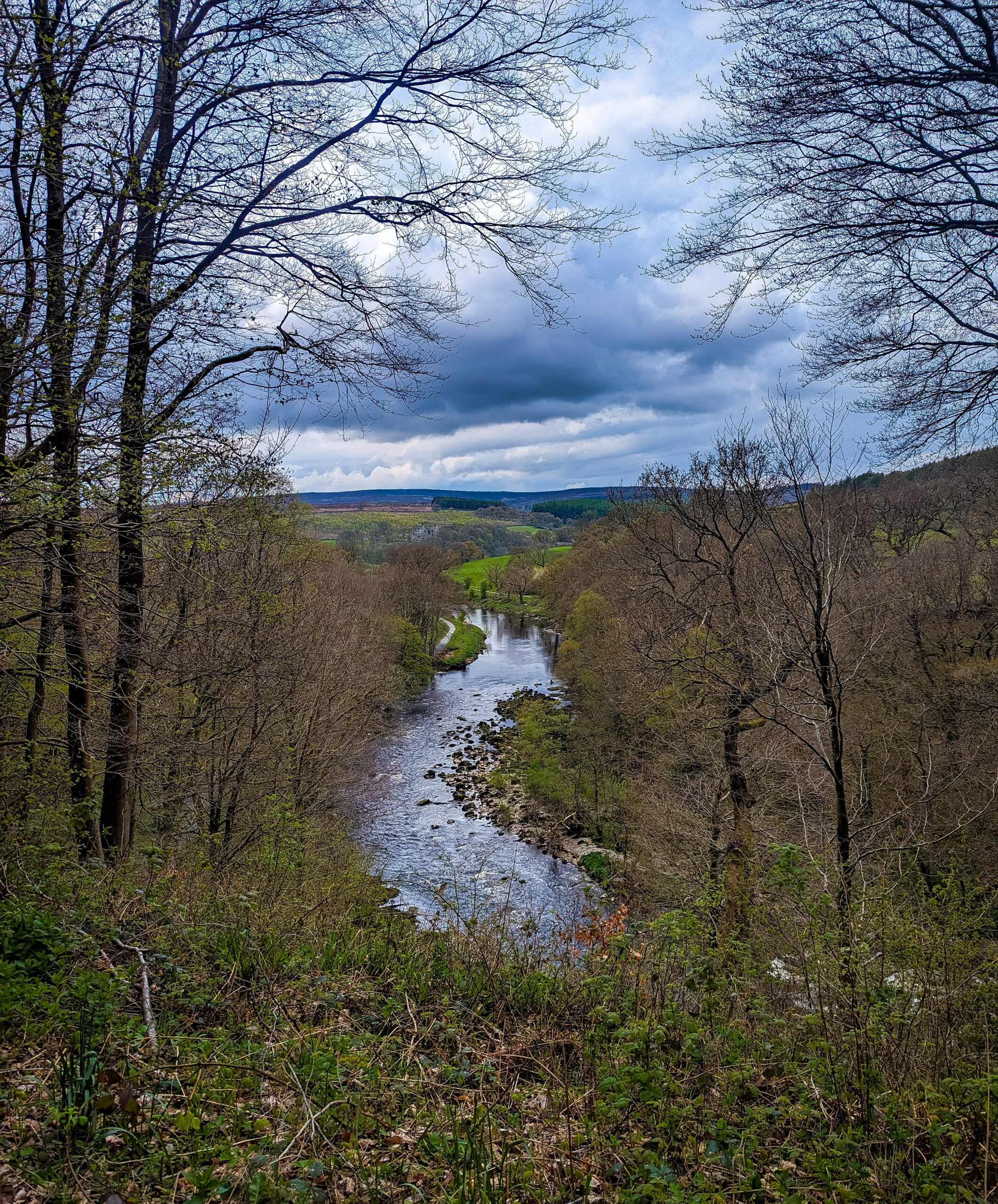
This vast estate has inspired many over the years. William Wordsworth’s poem The White Doe of Rylstone was written after a visit to Bolton Abbey in 1807. Charlotte Bronte enjoyed spending time there with her family amongst the ruins and the green fields in 1833. It is believed that she met the artist Edwin Landseer there after a drawing similar to another of his oil sketches was found in her possessions. JMW Turner was also a fan of the landscape and created many watercolour paintings of the grounds.
In recent years, Bolton Abbey has become a popular filming location, with Netflix’s The Innocents, BBC Drama, Gunpowder, ITV crime series DCI Banks, and Peaky Blinders all shooting scenes there. It has also been used several times in the new All Creatures Great and Small TV show based on the books of James Herriot, a local author. Finally, if you look closely at the cover of The Cure album Faith, you will see a blurred pitch of the Abbey.
The History of Bolton Abbey
Bolton Abbey estate covers around 30,000 acres of fields, woodlands, and moorland, which are filled with wildlife, fauna, and flora for all to enjoy. The 12th-century ruins of Bolton Priory cast an impressive shadow over part of the estate, while at the other end of the sprawling estate, you will find Barden Bridge, a 17th-century three-arched crossing over the River Wharfe.
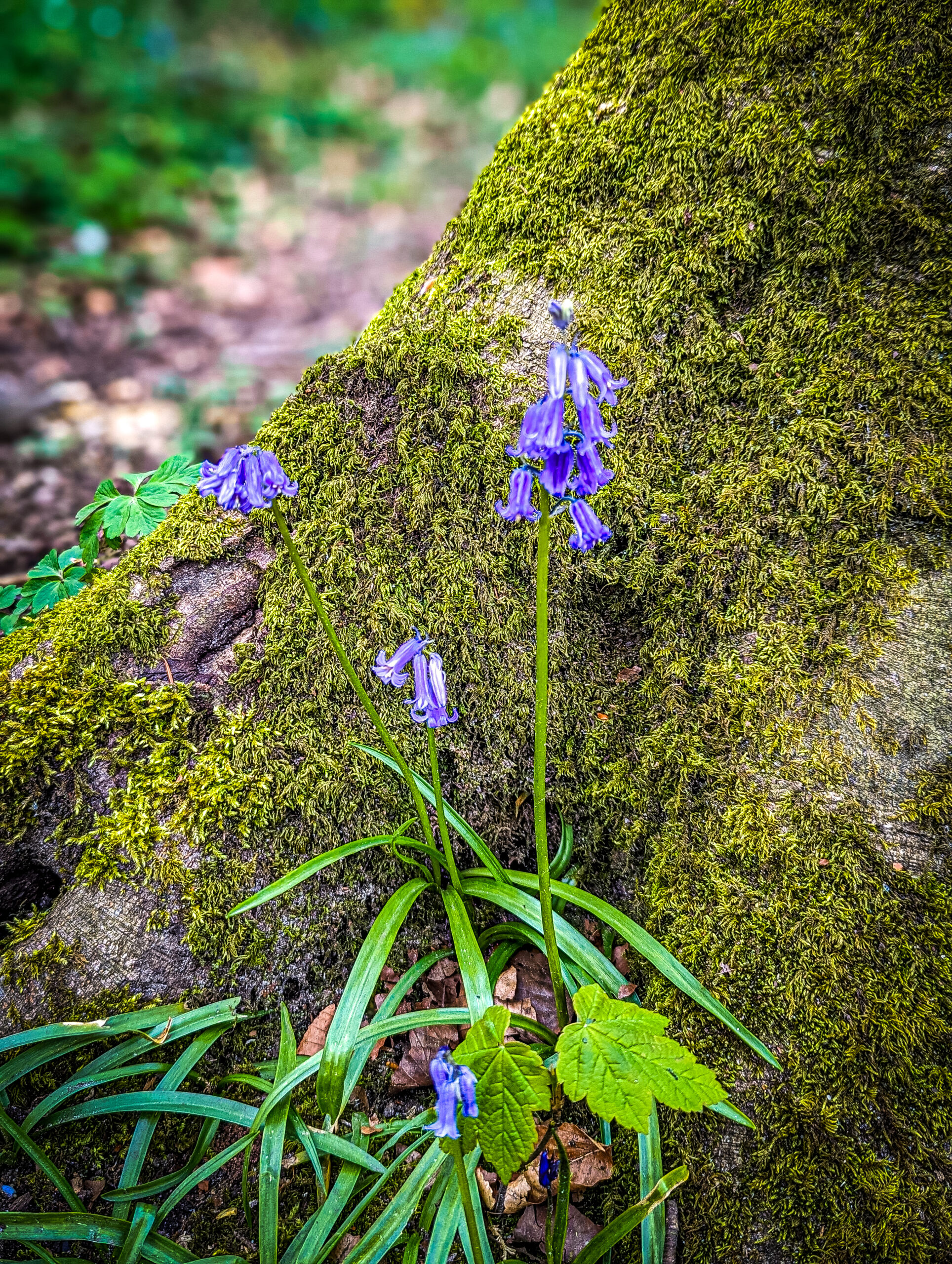
Since 1755, the Cavendish family has owned this estate with its 80 miles of footpaths and 8 miles of river. They also own Chatsworth House, which has been used as a filming location for many shows, including Pride and Prejudice (2005), The Duchess (1998), Death Comes to Pemberley (2013), and Peaky Blinders (2014).
24 hours in Bolton Abbey Itinerary
Bolton Abbey offers a perfect day out for those who enjoy history or wandering around the Yorkshire countryside. With miles and miles of ground to explore, a weekend here may simply not be enough if you enjoy walking.
However, if you only have 24 hours to explore, we have created the perfect one-day walking itinerary, including a list of the top sights to make the most of your day.
Day 1 Bolton Abbey Itinerary
Park at the Bolton Abbey car park and enjoy breakfast at the Tea Cottage
Conveniently located to the ruins, the Bolton Abbey car park (BD23 6AN, What3Words: lease.speeded.fellow) is the best place to park up for your day exploring the estate. If you are travelling during the summer months when it is busier and want to secure your parking, you can reserve your place ahead of time for £12.50, or it will cost £15 if you pay on the day you visit (2024).
To start your day right, once you’ve parked up, head to The Tea Cottage, an 18th-century building with beautiful exposed beams. Here, you can enjoy breakfast and coffee with views out across the Priory.
Walk down to the Priory ruins and the church
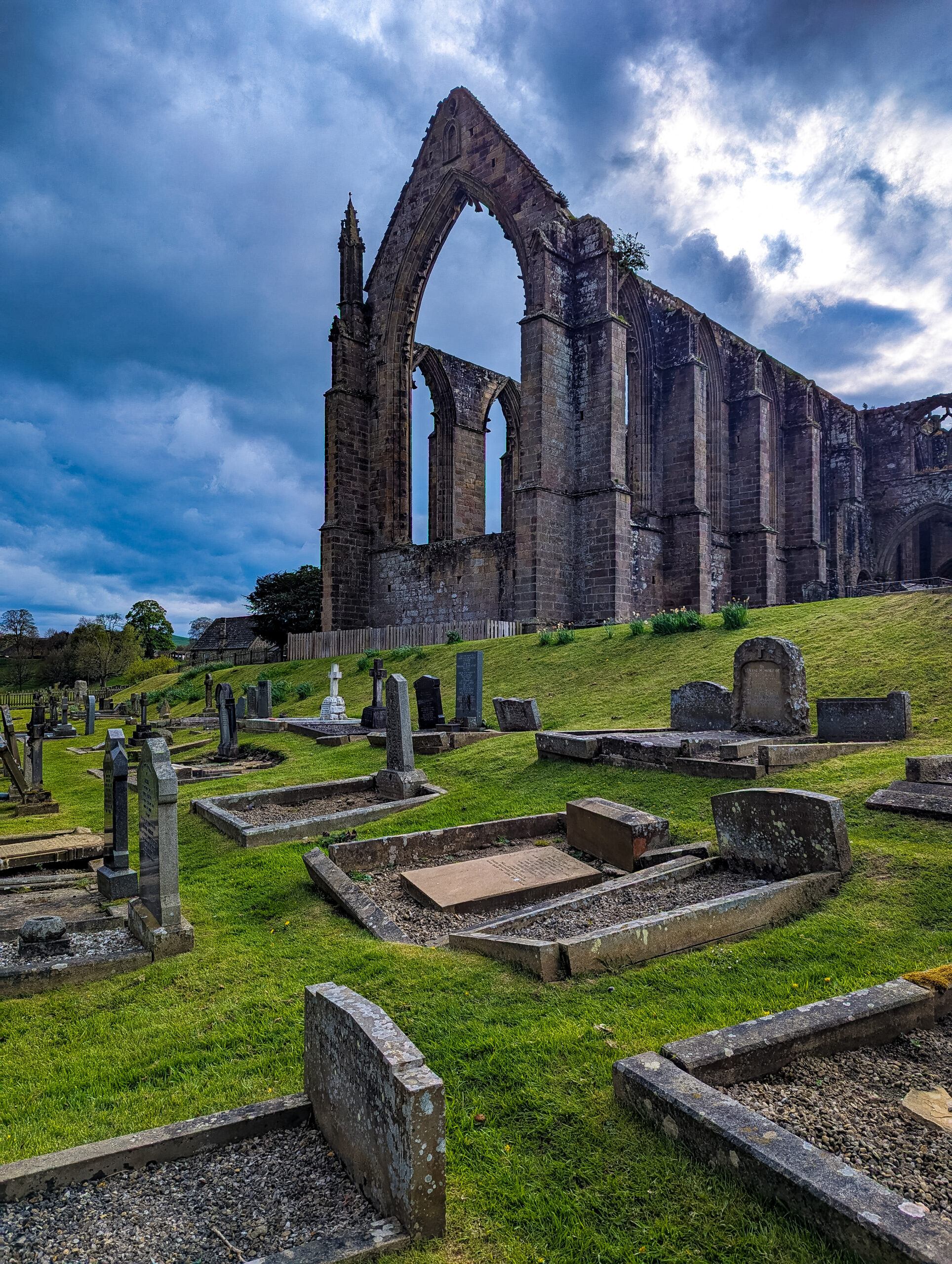
Most people visit Bolton Abbey for the Priory ruins, which date back to 1154 when Alice de Rumilly of Skipton Castle gifted the land to the Augustinian Order. The canons worshipped here until 1539 when Henry VIII dissolved all monasteries.
Although well preserved, today’s remains are just a tiny part of the initial monastic estate, including barns, workshops, a mill, a bakehouse, a brewery and a tannery, orchards, and farmland.
As you wander from the Tea Cottage into the Priory grounds, you will still see a formidable structure. The nave shell remains complete, with the arches where magnificent stained-glass windows would have once been.
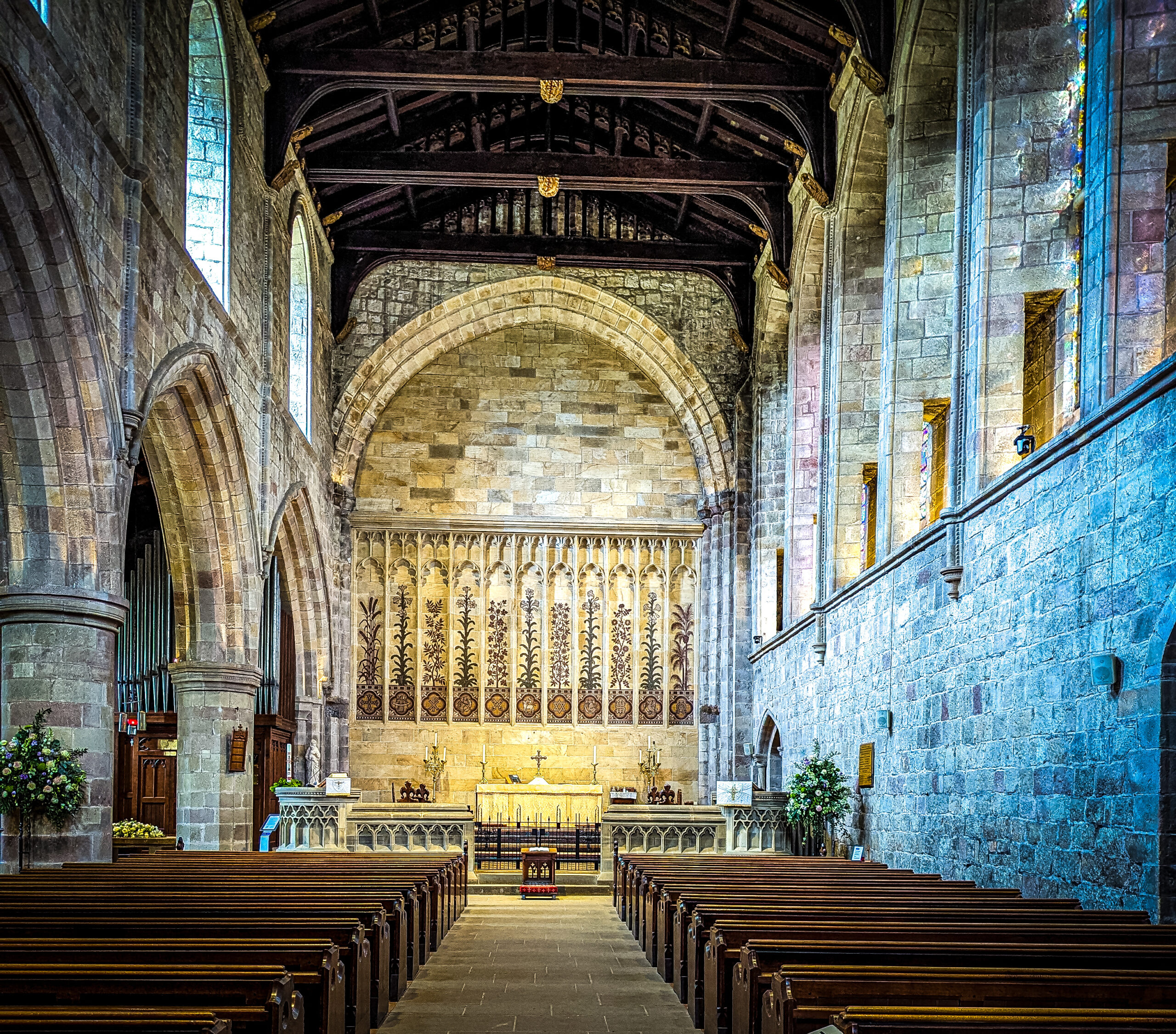
Worship still takes place at the small church housed within today. It is more frugally decorated than some, with exposed brickwork forcing you to focus on the altar and its decorated background or the stained-glass windows that remain on the north side of the building, which still house glass dating back to the 14th century in the roundels.
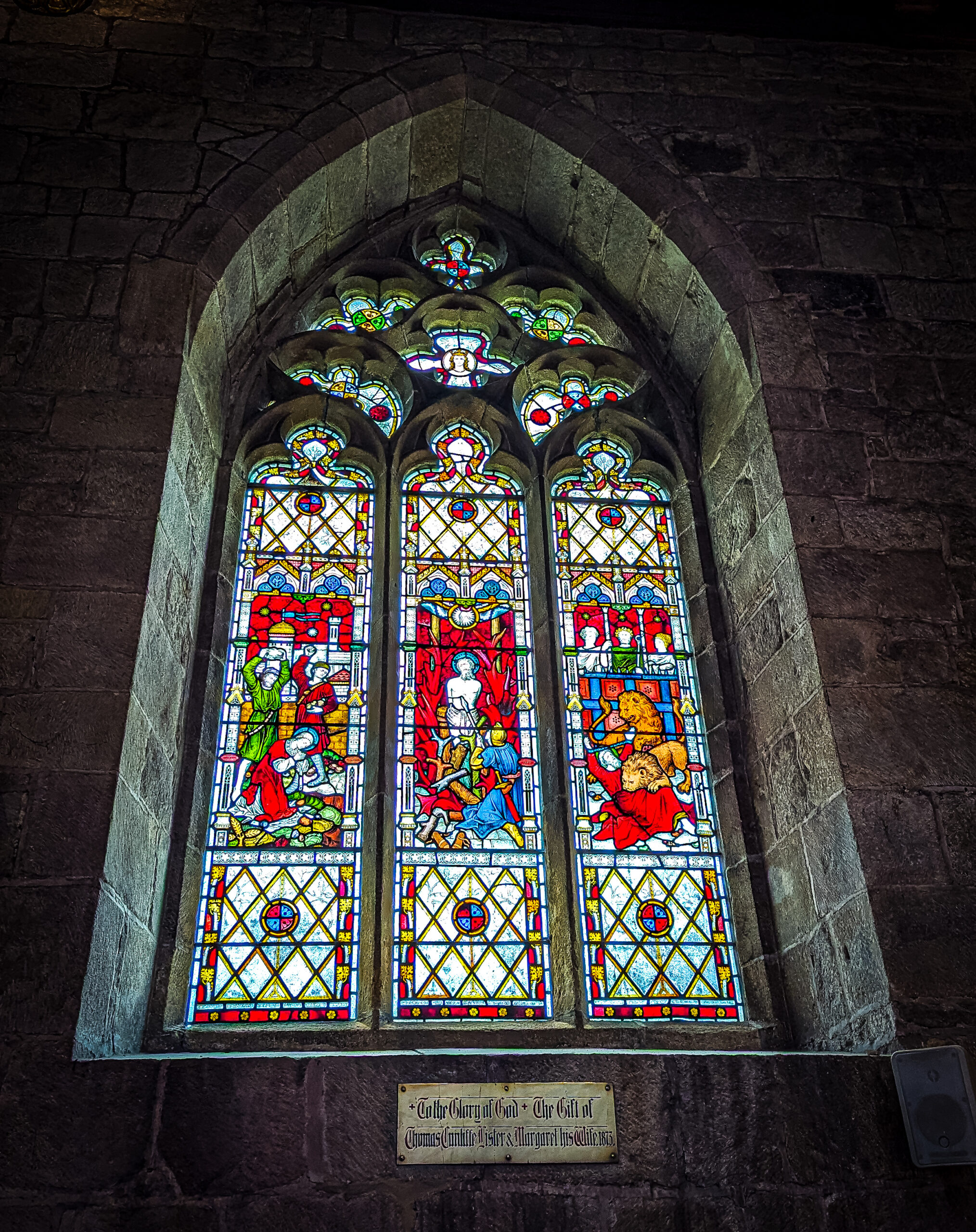
Outside, the graveyard is home to many medieval stones and those dating back to the First World War, while more recently, the cricketer Fred Trueman was laid to rest here.
Head across the bridge near the Stepping Stones
From the Priory, head down to the water’s edge, where you will find a bridge or, for the more adventurous, 60 stepping stones to cross. These stones would have, at one time, been the main crossing route to the Priory for lay workers, but they have now become a tourist attraction in their own right.
When you turn back towards the Priory from this point, you get a sense of just how immense this building would have once been and how well it has been preserved.
Walk up pass Cavendish Bridge to the Valley of Desolation
It’s now time to walk along the river towards the Cavendish Pavilion and past the money tree, a fallen tree whose bark is covered in coins. Keeping the Pavilion and the river on your right side, you must take the pathway towards the left signposted for the Valley of Desolation. You will need to climb quite steeply for a short time to ensure you have decent footwear, but it will be worth the effort.
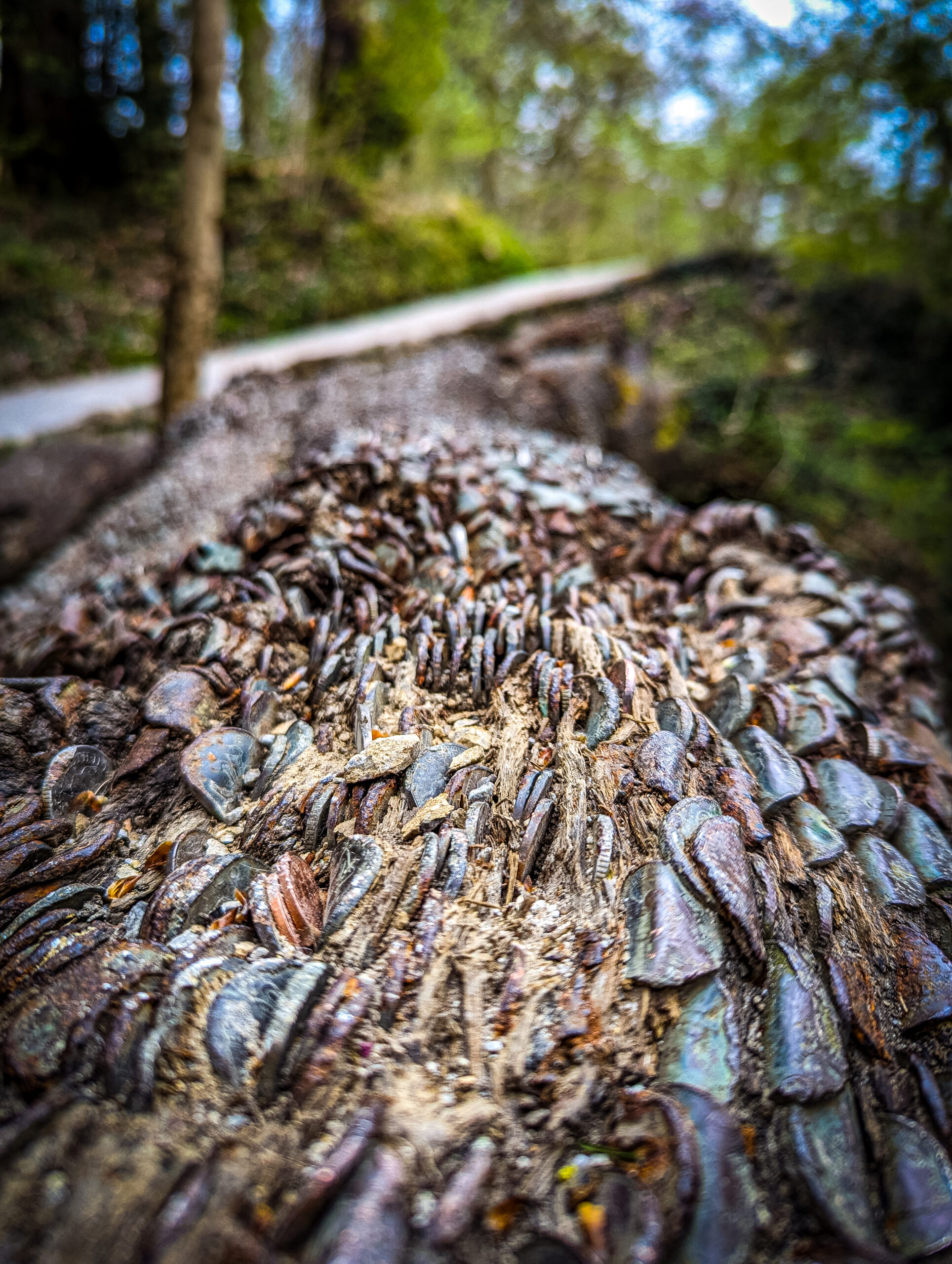
The Money Tree at Bolton Abbey
The Valley of Desolation provides a stunning walk across the moorland, which has become increasingly popular with walkers in the area. Along the way, you will pass rugged and picturesque landscapes covered with wildflowers, as well as heather and bluebell-covered hillsides spreading out across Barden Moor. Don’t forget to also look up as you wander, for there are many different birds that frequent the area.
Your end destination here is actually the Posforth Gill Waterfall, which in recent years has become known as the Valley of Desolation Waterfall. At several metres high, it cascades down over moss-covered rock formations into the shallow waters below.
If you brought a packed lunch, this could be the perfect stopping point.
Continue on this side of the river until you reach Barden Bridge
After recovering from your hill walk up to the waterfalls, it is now time to head towards Barden Bridge on this circular exploration of Bolton Abbey estate.
The footpath here will lead you back down through the farmers’ fields to the Wharfe River below, where you will find the three-arched Barden Bridge, which dates back to the 1600s. An earlier bridge stood on this spot but was washed away during the floods of 1673 and had to be rebuilt.
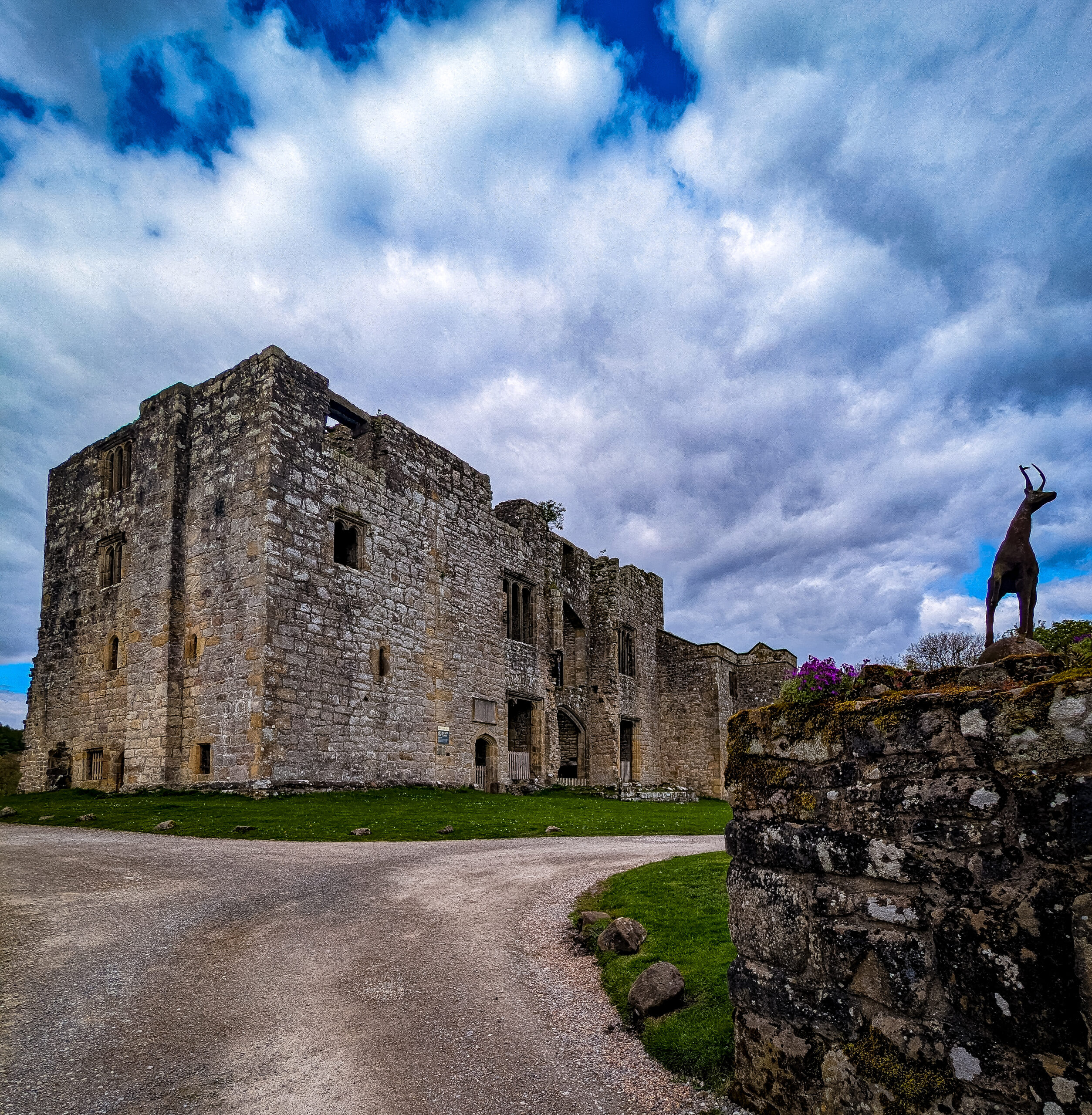
The ruins of Barden Tower
Enjoy lunch or coffee at the Priest House in the grounds of Barden Tower
After crossing the bridge and before heading back along the river, once again head uphill, this time along the road to Barden Tower.
Standing just three stories high, this tower was built during the 15th century by Henry Clifford and restored by Lady Anne Clifford in 1659. At that time, it would have been used as a hunting lodge, as deer and wild boar both roamed in the nearby forests. There are also two further buildings, a chapel and the Priest’s House, which are still used today as both a restaurant and a wedding venue.
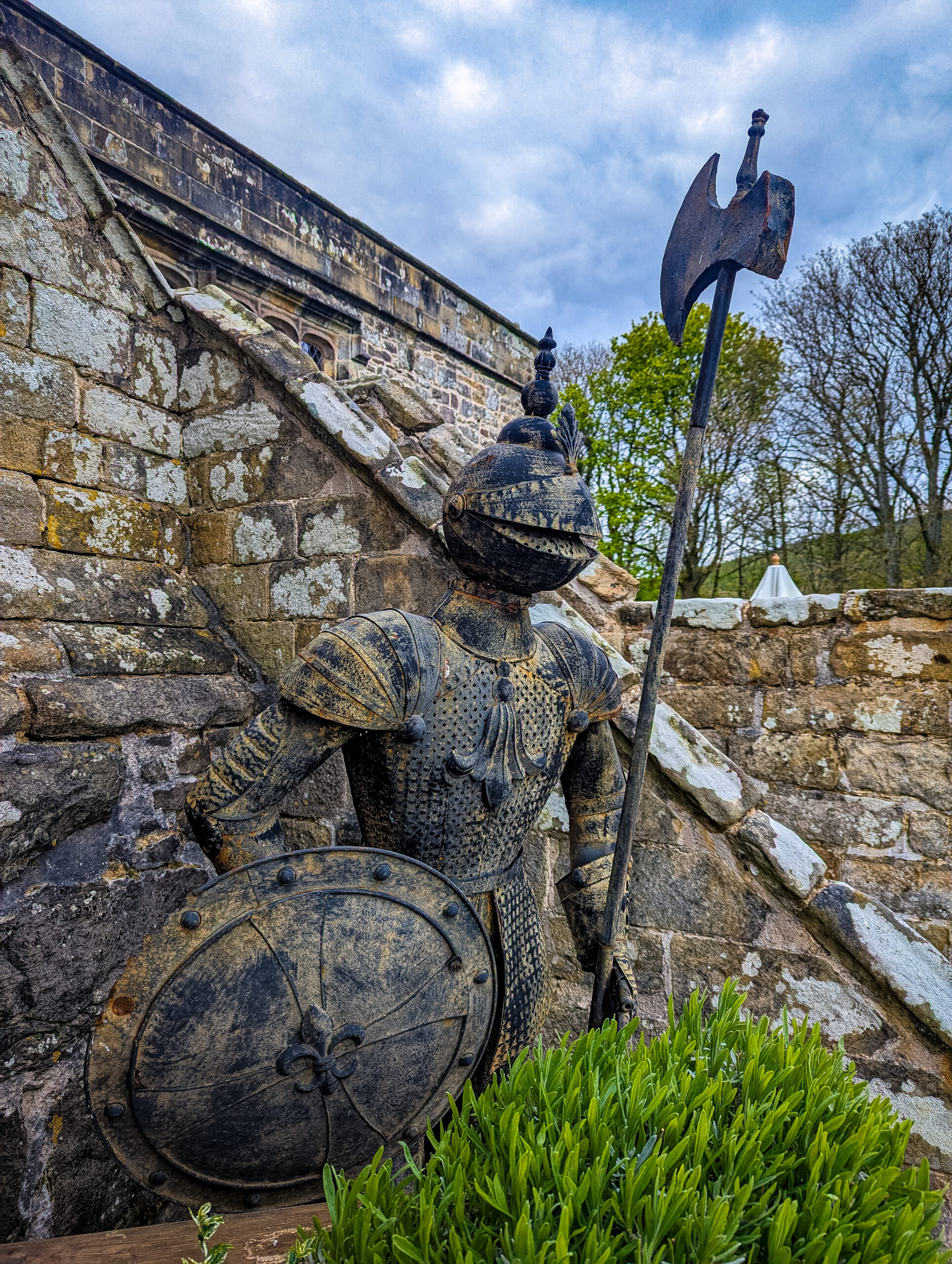
The outside of the Priest House
If, therefore, you have not packed yourself a lunch, the Priest’s House offers light refreshments and a Sunday dining option in opulent surroundings with impressive views over the rolling countryside.
Head towards the Aqueduct
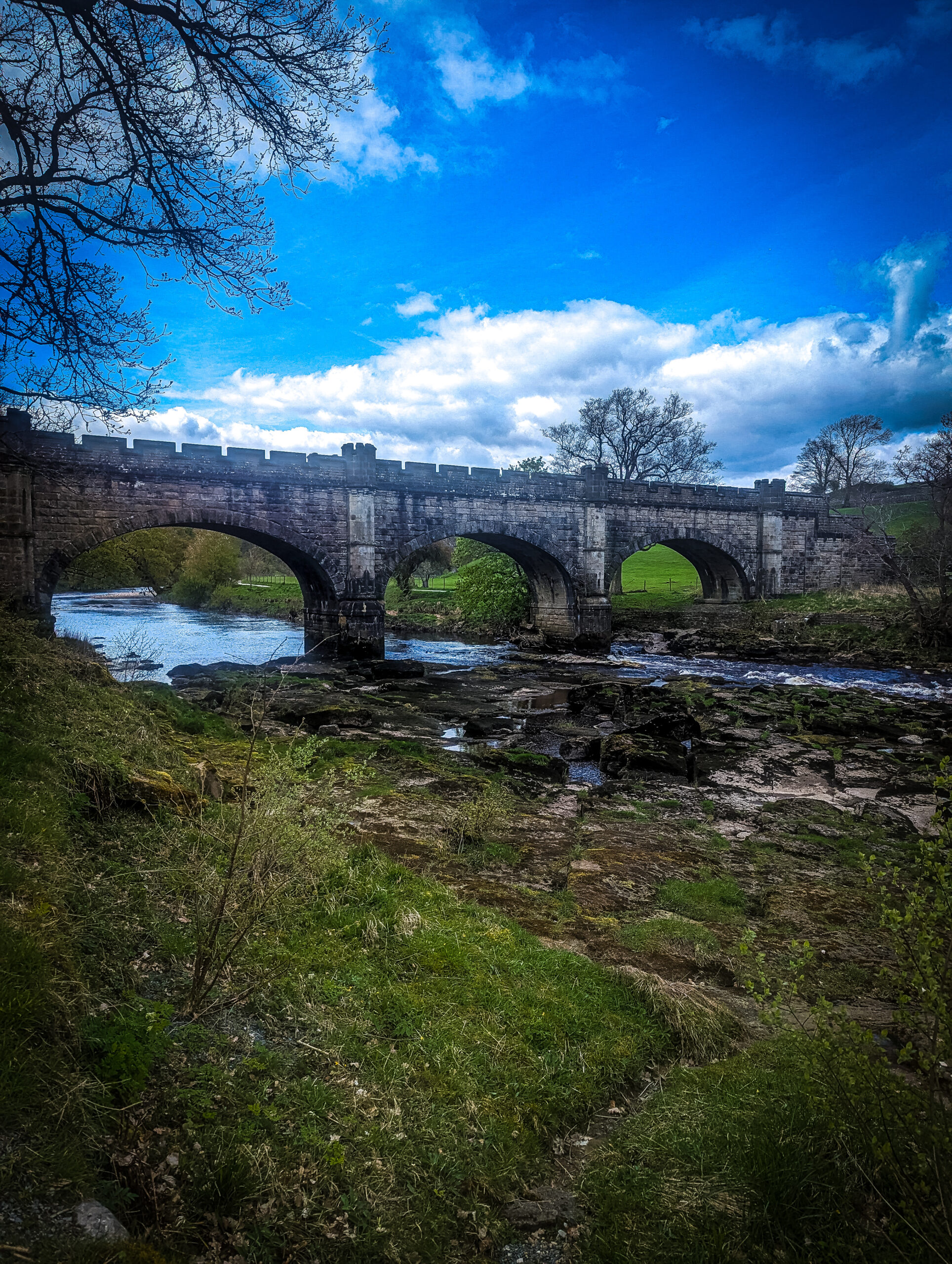
Back on the road, you will need to walk back on yourself slightly to rejoin the river walkway towards the aqueduct. Today, this turreted bridge still carries water, although not in an obvious way, as it hides the pipework that carries water across from the Nidderdale reservoir to the homes of North Yorkshire.
Next up is the danger of the Strid
From the aqueduct, continue along through the Strid Woods, which are full of bluebells and wild garlic and home to a vast selection of sessile oak trees that tower above, allowing for greater shade, especially during the warmer months. While walking, keep an eye out for woodpeckers, kingfishers, otters, and even deer, which are known to roam freely nearby.
During this stage of your walk, you will pass the Strid, a local natural wonder. Here, the river narrows, and a fierce, free-flowing stretch of water has pounded away at the rocks to create a dangerous gap in them.
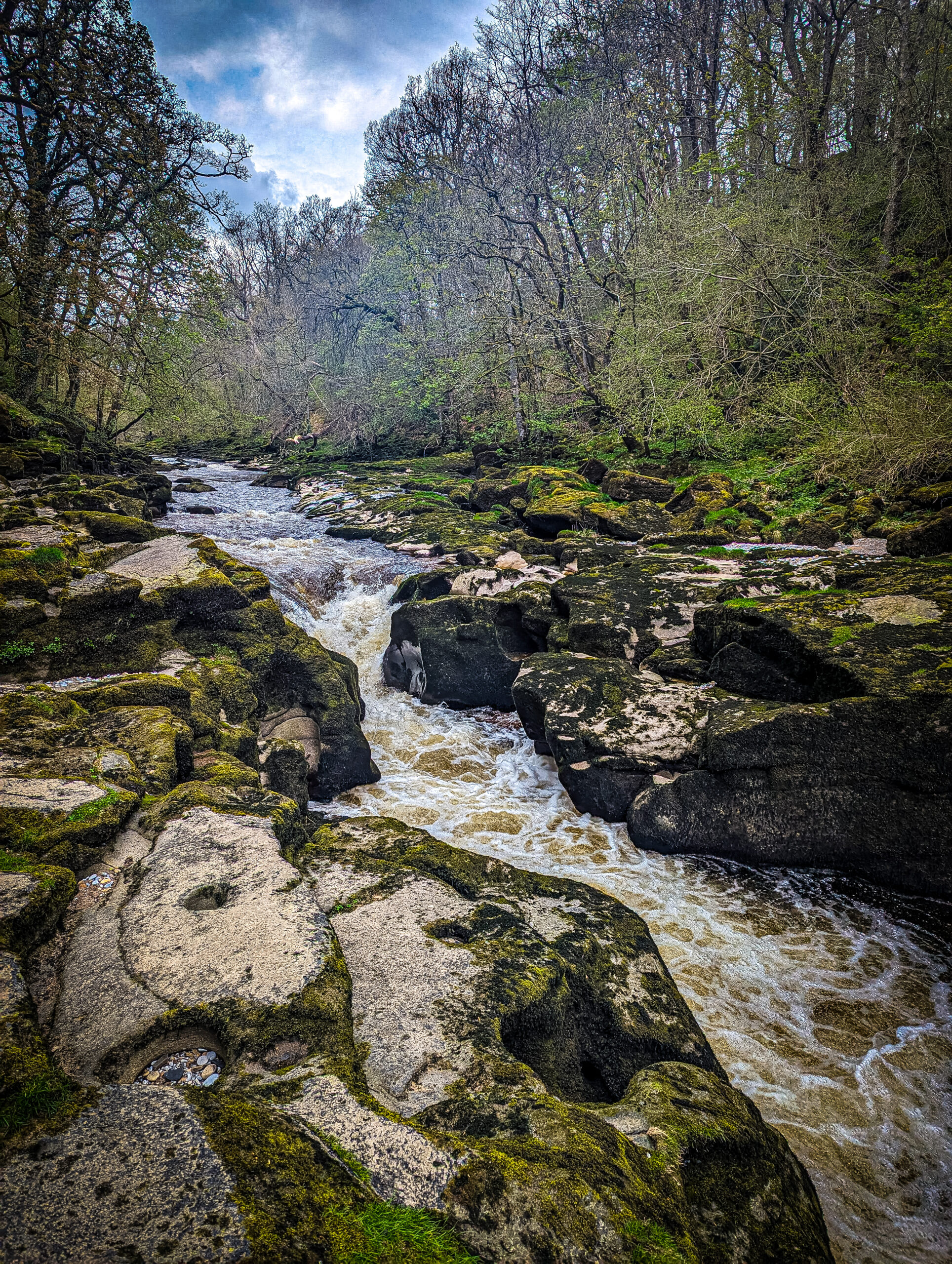
There are various viewing platforms and when the waters are lower the rocks are revealed allowing people to get closer, however, be warned the stones are slippery and the water fierce, so take care to stay safe as there are plenty of notices highlighting that people have lost their lives in this waterway.
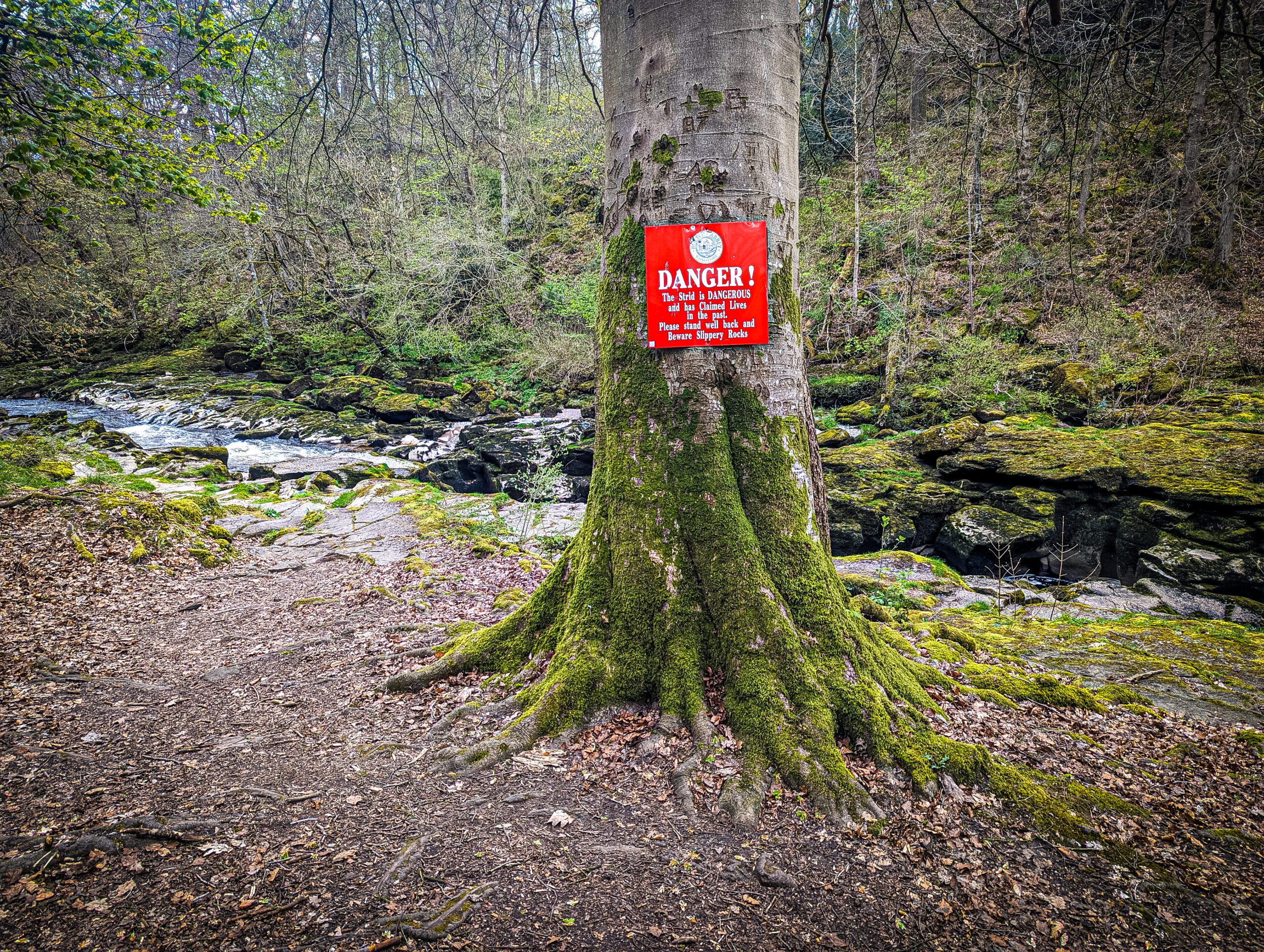
Take the weigh-off at the Cavendish Pavilion
By this point, you will have walked several miles up and downhill, and trust me when I say you will be thankful for a rest when you reach the Pavilion. Here, you can enjoy an afternoon treat of coffee and a nice slab of cake or, on warmer days, cooling ice cream.
Wander back up past the Memorial Fountain
You are now within touching distance of the car park (there is also a car park at the Pavilion should you prefer to park there) and have just one more short hill to climb back up to the road.
From the Pavilion, you will walk back towards the Priory, which, if timed right, looks lovely as the sun begins to set. Make sure you stop at the viewing point at the top of the steps for one last photo of the Priory and the surrounding countryside from above before walking through the gate towards the Memorial Fountain.

This Gothic fountain was erected in 1886 in memory of Lord Frederick Cavendish, who was murdered in 1882.
Peruse the antique bookshop
Even after a day of walking, with no other shops nearby, I have found a bookshop where bookworms can reward themselves after a long day of exploring. As with everything else on the estate and in the village, this building also dates back to the 18th century and now houses Grove Rare Books, which has three rooms filled to the brim with rare, out-of-print, and antiquarian books on a wide selection of topics. Whether you are after a fictional or nonfictional read, you are bound to find something here.
Enjoy dinner at the Devonshire Arms Hotel
Once you have removed your walking boots, head to the Devonshire Arms for a well-deserved meal in luxury surroundings. There are various dining options depending on the day and time of your visit, and with its own kitchen garden, you can be sure that everything served is fresh, with either home-grown or local produce.
Final Thoughts
I appreciate that a heavy day of walking around North Yorkshire may not be for everyone, but even if you decide that the above itinerary is not for you, make sure you stop off to enjoy the grounds of the Priory after all it is one of the best preserved in all of England.
Recommended Tours
- Take a ride on a vintage steam train at the Embsay and Bolton Abbey Steam Railway before looking at the various locomotives on display. Many different dining options are also available here, including themed events based on Faulty Towers and murder mystery evenings.
- If you enjoy hiking, head out onto Ilkley Moor close to the site of the Cow and Calf, a large rock formation, seek out the carved rocks or head to the spot where a UFO was said to have been spotted back in 1987.
- Spend the day in Skipton, visiting the castle, wandering by the canal and enjoying the shops.
- Head underground at the Stump Cross Caverns and explore 300 million years of history.
If you have time to visit further afield:
- Ripon, a cathedral city, is home to an eclectic mix of shops and restaurants and is where Lewis Carroll spent a great deal of time.
- Head to Harrogate, home of the now famous Theakston Old Peculier Crime Writing Festival held each July at The Swan Hotel, the same hotel where Agatha Christie disappeared for 11 days.
- If you are a fan of All Creatures Great and Small and the James Herriot novels, Thirsk is a must during your trip around Bolton Abbey.
- Richmond, a market town with a well-preserved Norman Castle, waterfalls and plenty of independent shops, is worth a day trip.
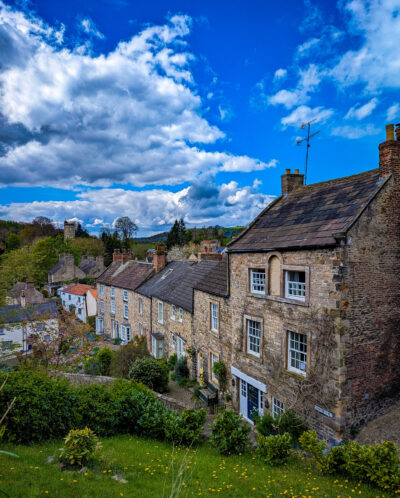
- If you have time, even if it’s only for one day, head to York and wander around the Shambles.
How to get to Bolton Abbey
It is located between Skipton and Harrogate on the A59, and trains frequently arrive at Skipton station. There are also frequent buses to Ilkley, Graddington, Wakefield, Bradford, and Leeds.
Travelling by Motorhome to Bolton Abbey
As previously mentioned, there is a car park at Bolton Abbey (BD23 6AN), and there are also a couple of pub stops nearby:
- The Elm Tree Inn at Embsay (Embsay, North Yorkshire, England, United Kingdom, BD23 6RD) offers free stopovers as long as you eat in the pub.
- The Cavendish Arms (Embsay, North Yorkshire, England, United Kingdom, BD23 6QT) also offers a parking overnight option.
Where to stay near Bolton Abbey
If you are looking to add a bit of luxury to your trip, consider a stay at the Devonshire Arms Hotel, which has a spa, indoor pool, and several different eating options within walking distance to Bolton Priory. If, however, you would prefer a self-catering option, the estate also has its own holiday cottages, which have been beautifully decorated, have wood-burning stoves, and have hot tubs to relax in after a day of hiking.
Motorhome Campsite Options
For those looking to stay in the heart of the estate in their motorhomes, Bolton Abbey Estate Club Site, part of the Caravan and Motorhome Club is located by Strid Woods. This is the perfect spot for those looking to escape it all, surrounded by woodlands, wildlife and walking trails.
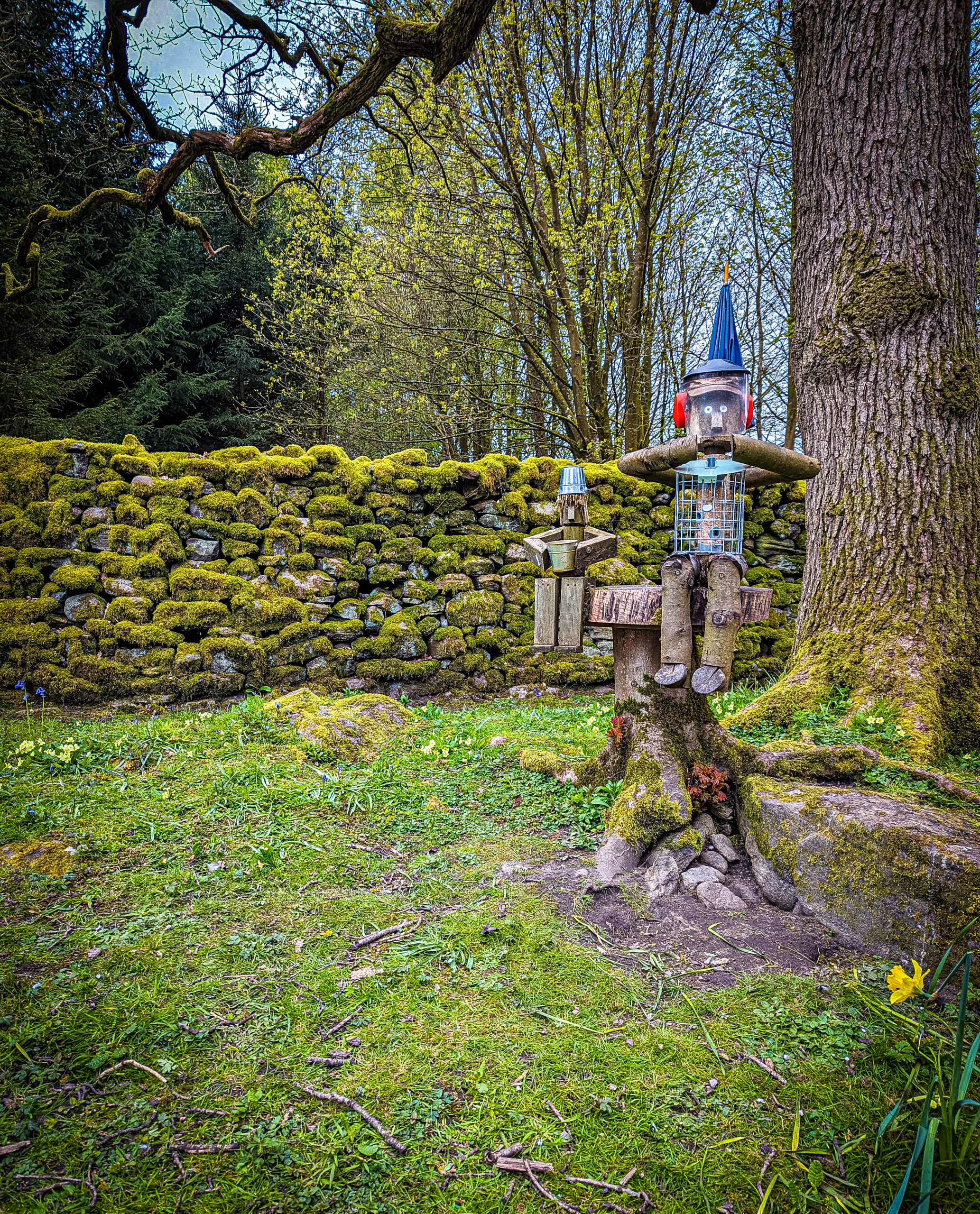
It’s important to note that this site has very little Wi-Fi signal, but if your purpose is to go hiking in the hills, this really isn’t something you should worry about. The site does also provide ariel connections and therefore if you are a die-hard soap fan or enjoy watching T.V. in the evenings make sure you add a T.V. cable to your camping equipment.
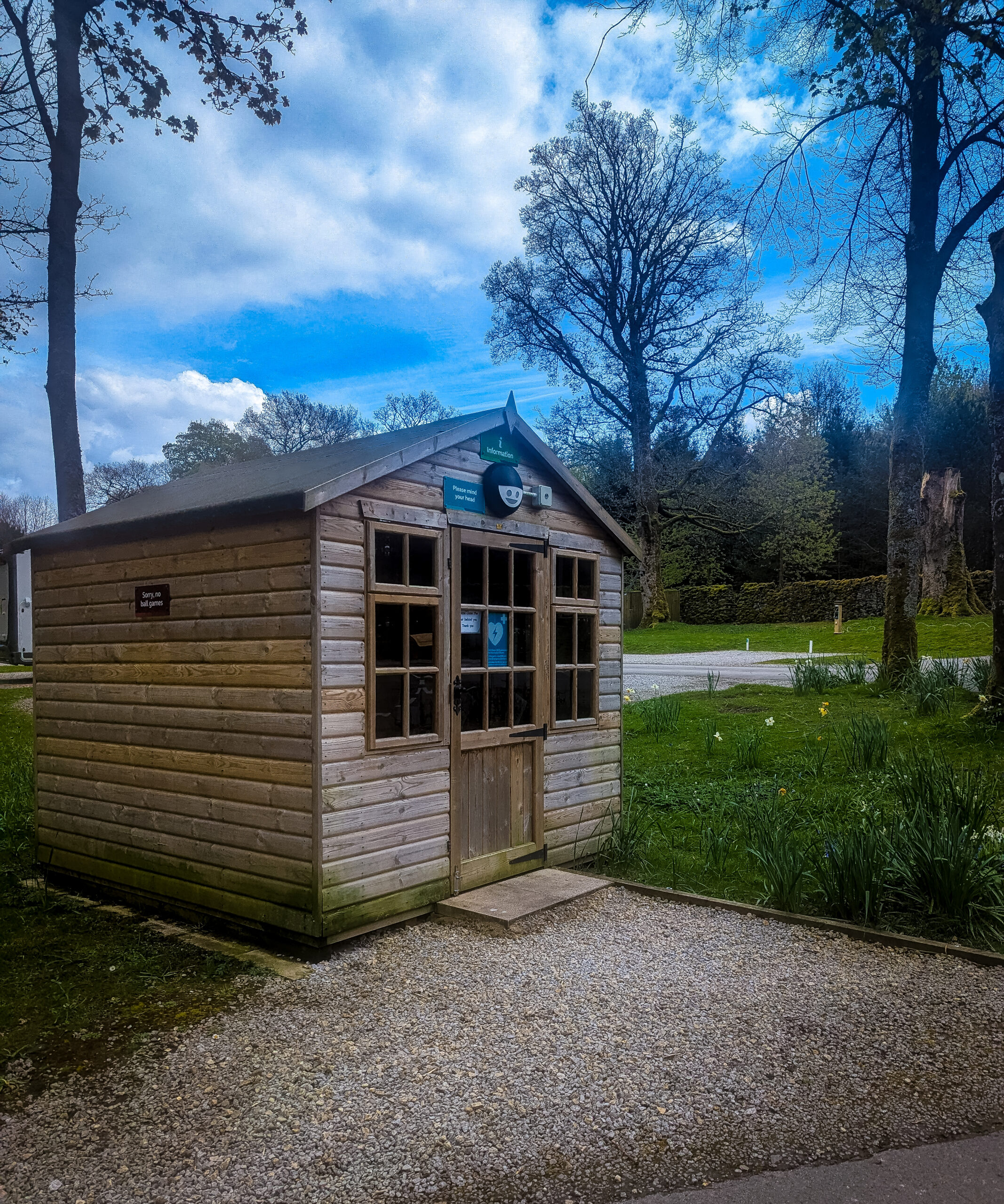
The information hub on site
Unlike some other campsites, here you will wake to the sounds of birds and be able to stargaze when the skies are clear due to a lack of light pollution, making it the perfect getaway in nature. Don’t panic, though, if you are someone who enjoys mixing it up a bit; there is a bus service that runs to Skipton, and the staff on-site are only too happy to advise on other places to visit nearby.
Have you visited Bolton Abbey? What would you recommend others visit when in the area?
(N.B. The Caravan and Motorhome Club did provide us with a free pitch for the duration of our trip, but all research and recommendations are our own and have in no way been influenced by others).
Did you enjoy this article? If so, PIN it for later…
